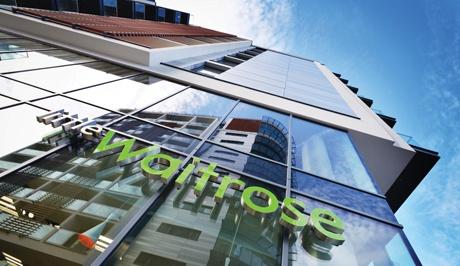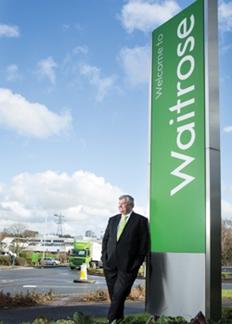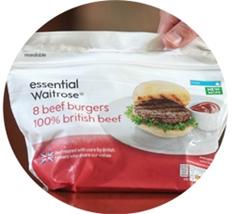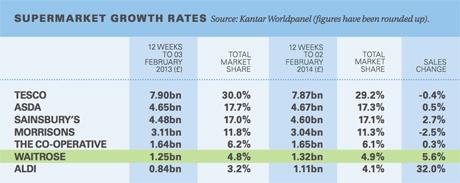Profile: Waitrose managing director Mark Price
Waitrose put its company culture first when it promoted Mark Price to marketing director in 1998 - he was chosen for cultural fit rather than a detailed knowledge of brand strategy. Now managing director, he talks to Marketing Week about his aims to double the size of the business in the next ten years.
It was timely, albeit a coincidence, that on the day Justin King stepped down as Sainsbury’s chief executive last month[1], Waitrose boss Mark Price stepped up to receive an honorary fellowship from The Marketing Society. Waitrose, going great guns under Price’s stewardship, is eyeing up the market share of all its rivals as it continues to outpace the competition with an aim to double the number of stores it has in the next decade.

Price picked up the accolade for his services to retail and marketing, which include growing Waitrose into a £6.5bn brand since he became managing director in 2007. Speaking to Marketing Week a few days after his Marketing Society presentation dinner, he says that King’s resignation was not a surprise as “people have been talking about it for a while”, but that he has no intention of making a similar exit from Waitrose any time soon.
Price is certainly busier than ever. Last year he was made deputy chairman of the John Lewis[2] Partnership: the parent company of John Lewis and Waitrose, as well as deputy chairman at Channel 4. On the back of its strongest Christmas trading period to date, Waitrose has also started 2014 in a hurry, announcing a number of initiatives including a new corporate social responsibility board and a click-and-collect partnership with Transport for London that will allow people to order groceries online and pick them up from lockers at Tube stations.
We are not defined by the income of our customers – we define ourselves by our values and those of our customers
Despite his commitments, Price is warm, welcoming and generous with his time – traits perhaps not surprising in a man affectionately known as ‘the chubby grocer’ after he started a blog of the same name in 2008. He has spent his entire career with John Lewis and Waitrose, which began 31 years ago in the lighting and silverware section of John Lewis, Southampton.
A marketer at heart
But despite this long tenure in the partnership, which included a stint as Waitrose marketing director between 1998 and 2005, Price has defined his leadership through innovation and disruption of the market, rather than doing things the same way.
“The name of the game is to break the cycle that you’re in so that you can give more and more back to your customers,” he says. “If you can do that, it becomes a virtuous circle and more customers start coming to you.”
This approach has helped forge Waitrose’s reputation as an upmarket supermarket synonymous with posh shoppers and ‘yummy mummies’ – but also an aspirational brand catering for all kinds of consumers searching for better quality products.
Waitrose currently has a market share of around 5 per cent, according to Kantar figures, but given its strong growth in recent years, including an 8 per cent rise in sales in the first half of last year to £3bn and a 13 per cent hike in operating profit to £160m, the chain has a strong claim to a larger slice of the market.
Growth ambitions
Price speaks confidently of Waitrose’s ability to double in size over the next 10 years, from 303 stores at present to around 600 and to potentially triple revenues over the period to as much as £16bn after inflation. He laces these predictions with a note of caution, however, suggesting that preserving Waitrose’s USP is vital amid the growth.
“I don’t believe that bigger is better, I just think that better is better,” he says. “Therefore the focus has to be on growing in a sustainable way that doesn’t in any way compromise the standards, beliefs and values of the organisation.”

This philosophy served Waitrose well during last year’s horsemeat scandal, when several supermarkets came under fire following the discovery of horse DNA in beef products. While the likes of Tesco[3] and Asda[4] were found to have contaminated products, no horsemeat was found at Waitrose.
The scandal provided a further sales boost to Waitrose in the first half of last year and gave Price a platform to highlight the difference between Waitrose’s business practices and those of other supermarkets. At the height of the crisis Price spoke in the press about the problems that had arisen from businesses and consumers regarding food as a “cheap commodity”. He urged the industry to follow the example set by Waitrose, where all meat is British and produced within its own supply chain.
“Our buyers aren’t going to the world market and saying who can sell me the cheapest beef of a certain quality,” he says. “Customers were reassured that we had done better in making sure that was right.”
Loyalty schemes
More recently, Price has emphasised Waitrose’s different approach to loyalty schemes – again through an outspoken critique of its rivals. Last year, he described traditional points-based loyalty schemes such as Tesco Clubcard as “meaningless”, claiming that consumers derive little value from collecting points over a period of time.
The comments, which were covered by a number of national newspapers, came as Price announced that Waitrose has become the UK’s second largest provider of fresh coffee thanks to its myWaitrose loyalty scheme, which offers ‘instant rewards’. The scheme entitles myWaitrose cardholders to one free tea or coffee every day, as well as a free newspaper when the shopper spends £5 or more.

Price stands by his criticism when quizzed about the comments, arguing that the success of myWaitrose is vindication for the retailer’s alternative approach to loyalty. Waitrose is currently shifting around one million cups of free coffee a week through the scheme, which has 3.7 million members. The retailer’s newspaper offer is expanding too, with publisher News UK agreeing this month to include the Times and Sunday Times titles in the myWaitrose scheme.
“I think points are transactional – I don’t think they’re about affinity,” he says. “They’re an evolution from post-war coupons and green shield stamps. That’s not about a relationship.
“We want to say to our customers ‘welcome to our shop, have a cup of coffee, read a newspaper, we’ll look after you’. It’s about building that affinity, rather than transactional points.”
This open-armed approach poses additional challenges for Waitrose, however. In the wake of Price’s comments at the end of last year, several newspapers carried stories about a ‘middle class revolt’ among long-time Waitrose shoppers who had voiced concerns that the free coffee and tea offer has attracted “the wrong type of customers”.
The reports were based on social media postings by Waitrose shoppers who claim people are abusing the scheme by coming in for free drinks without buying anything. Some complaints had social class overtones with suggestions that the offer is attracting less affluent or cultured people. One Twitter user wrote: “Bit disconcerting seeing people carrying cups of hot coffee around Waitrose whilst they text and push trolleys with their bellies.”
Price is happy to tackle this debate head-on, however, claiming it is about a “much bigger ideal” of Waitrose’s role in society. “I haven’t got a problem if someone comes in for a cup of coffee, gets it and walks out,” he declares. “They come into Waitrose, we’re a social hub and they have interacted with the brand. Next time they might come in and buy a sandwich.”
Waitrose is also seeking to reinforce this welcoming approach by introducing concierge-style welcome desks into its larger stores. The desks, which are currently present in around 100 stores, offer information and additional services like dry cleaning. The aim is again to welcome people into stores and position Waitrose as a community hub for local people.
The modern Waitrose
“This is about building the modern Waitrose,” says Price. “We’re not niche: we’re a £6.5bn business with 60,000 employees and over 6 million customers a week. We’re not defined by the income of our customers – we define ourselves by our values and the values of our customers.”

Cynics might scoff at Price’s attempts to play down the role of income, but it would be wrong to pigeon-hole Waitrose shoppers as simply posh or rich. Essential Waitrose, the own-label value range launched in 2009, now accounts for a fifth of Waitrose’s sales and covers around 1,800 everyday products such as bread and milk. The retailer has also stuck to its Brand Price Match commitment, which began in 2010 to ensure that branded products are the same price as Tesco, excluding promotions.
“Because we sell oysters and £500 bottles of wine, people will say ’they sell lots of posh food’, but we also sell wine for under £5 and Essential Waitrose on everything,” says Price. “We get state pensioners with very little money shopping at Waitrose because they can buy produce at the quality they want. For them Waitrose offers great value because the quality is better.”
This all-encompassing outlook is reflected in Waitrose’s advertising, which avoids targeting specific demographic segments in favour of promoting the company’s values. Often this relates to the quality and provenance of the retailer’s produce - messages that are enhanced by the brand’s ongoing relationship with TV chefs Heston Blumenthal and Delia Smith.
Community work
At other times, Waitrose draws on its corporate social responsibility (CSR) and community work to promote its reputation as an ethical and caring supermarket. For last year’s Christmas campaign, for example, the company urged people to support its Community Matters scheme, which has donated £14m to local causes selected by customers. The approach diverged from most of the other major supermarkets, which went for more traditional Christmas campaigns focused on family celebrations and consumption.
“I think the campaign was very differentiated from the rest of the market,” suggests Price. “We weren’t selling products, we were selling an idea – the idea that Waitrose cares and that one of the ways we care is through our community commitments.”
Price’s current term as managing director began a year before the global financial crisis and the onset of the recession. He claims that the experience has driven home the need for a more ethical and compassionate approach to business management. Last month, the retailer set up a new CSR board of independent experts to provide advice to Waitrose’s management.
The board, which includes a bishop, an equal opportunities advocate and an agricultural expert, will sit quarterly and scrutinise all aspects of the company’s CSR programme. Price himself is chairman of Business in the Community and received a CVO for his work in 2014’s New Year honours list.
Trust in business
“The banking crisis six years ago caused consumers to lose trust in business and has made more thoughtful businesses think about the role they have in society,” Price says. “Unfettered capitalism has really been challenged and therefore there needs to be a different kind of contract between business and the government, as well as between business and communities and consumers.”
Retaining consumers’ trust is of vital importance to Price as Waitrose continues to expand. New innovations are therefore trialled on a limited basis to ensure they work and add to the retailer’s offer to consumers. This includes Waitrose’s new click-and-collect partnership with Transport for London (TfL), announced last month.

Waitrose will install refrigerated lockers in six stations so that commuters can collect their groceries as they pass through. Although Tesco is also participating in the scheme, the supermarket chain plans to use delivery vans in station car parks to deliver people’s shopping rather than lockers. Click-and-collect services are currently available at more than 150 Waitrose stores, but it hopes to roll out remote lockers to more locations this year depending on the success of the TfL trial.
Online sales rose by 40 per cent at Waitrose last year and Price believes that digital channels offer plenty more growth opportunities, particularly given the relatively small size of its store estate. “There are lots of people who love to shop with us and at the moment we just don’t have the capacity for them to do that,” he explains.
“So we need to keep building capacity, again at a sustainable rate. Last year we doubled the capacity of Waitrose.com and we’ll probably double the capacity again over the next couple of years.”
The John Lewis Partnership
Of course, Waitrose benefits greatly from having John Lewis as its sister company and vice-versa. The two stores share resources and develop joint services in a number of ways. For example, last year Waitrose extended the roll out of its click-and-collect service for John Lewis online orders. This means that John Lewis online shoppers can now collect their purchases from more than 200 Waitrose shops.
Price says there is a lot of “mutual respect” between the two companies that ensures they work well together. “We share data, ideas and we help each other in terms of the assortments we’re developing,” adds Price. “There’s a lot of commonality.”
The employee-ownership model behind the partnership also means that Waitrose and John Lewis invest heavily in staff training and personal development - an approach that has seen Price progress through the company from his early days in retail operations. After joining John Lewis on its graduate training scheme in 1982, he rose to become managing director of John Lewis stores in High Wycombe and Cheadle before he was asked by the partnership chairman to take on the marketing director role at Waitrose in 1998.

Price recalls his surprise at being asked to fill the position given his lack of marketing training and experience. The partnership enrolled Price in training programmes at London Business School and other institutions to help develop his marketing skills.
“The question [the chairman] considered was whether to bring someone in with marketing skills who didn’t understand the culture of John Lewis and Waitrose, or whether to bring someone in who understood the culture, the customers and the partners, and then teach them marketing skills,” explains Price. “He decided on the latter.”
Price’s appointment as deputy chairman of the partnership last year has fuelled speculation that the Waitrose boss will one day step up to lead the partnership when the current chairman, Sir Charlie Mayfield, stands down, though Price is coy on the prospect. For the time being, his sights are firmly fixed on shaking up the supermarket sector with Waitrose.
“I hope I can finish my career in the partnership,” he says. “I love the fact that we are continually self-critical and always try to be better and I really enjoy the competitiveness of the business I’ve chosen.”
Mark Price CV
2013 to present
Deputy chairman, John Lewis Partnership
Deputy chairman, Channel 4
2007 to present
Managing director, Waitrose
2005 to 2007
Development director, John Lewis Partnership
2000 to 2005
Selling and marketing director, Waitrose
1998 to 2000
Marketing director, Waitrose
1995-1998
Managing director
John Lewis Cheadle
1993-1995
Managing director
John Lewis High Wycombe
1991 to 1993
General manager
John Lewis Bristol
1982 to 1991
Graduate training scheme, followed by various management roles
John Lewis Partnership
A champion of marketing
As a former marketing director and now a fellow of The Marketing Society, Price is not surprisingly a big champion of the discipline in which he was trained when he moved to Waitrose in 1998.
This has resulted in plenty of backing for Rupert Thomas, Waitrose’s current marketing director and the man behind a number of high-profile initiatives such as the development of the Essential Waitrose range and the signing of Delia Smith and Heston Blumenthal as brand ambassadors in 2010. The brand works with creative agency BBH to shape its advertising strategy and spent £26.8m on advertising in 2012, according to ALF figures.
“Mark is a massive enthusiast for marketing, which is incredibly helpful for a consumer organisation like ours,” says Thomas. “I trust his judgement hugely and I think he trusts mine so I feel very fortunate to work for someone who is as marketing-literate as Mark.”
To support its strong sales growth, Waitrose is extending its marketing presence across a range of platforms. Last year, the retailer signed a three-year deal to become the new team sponsor of the England cricket team, beginning with the test series against Sri Lanka this spring, and also agreed an extension to its sponsorship of Reading FC.
The company has also increased its online activities, such as by launching several apps and content hubs. Thomas, though, says that a large part of his role is still focused on physical retail settings – particularly as the chain looks to expand its footprint with new stores.
“We see our product, service and the experience we offer customers as the ‘marketing’ at Waitrose,” he says. “That’s the most fundamental and important part of our brand.”
References
- ^ Justin King stepped down as Sainsbury’s chief executive last month (www.marketingweek.co.uk)
- ^ John Lewis (www.marketingweek.co.uk)
- ^ Tesco (www.marketingweek.co.uk)
- ^ Asda (www.marketingweek.co.uk)









